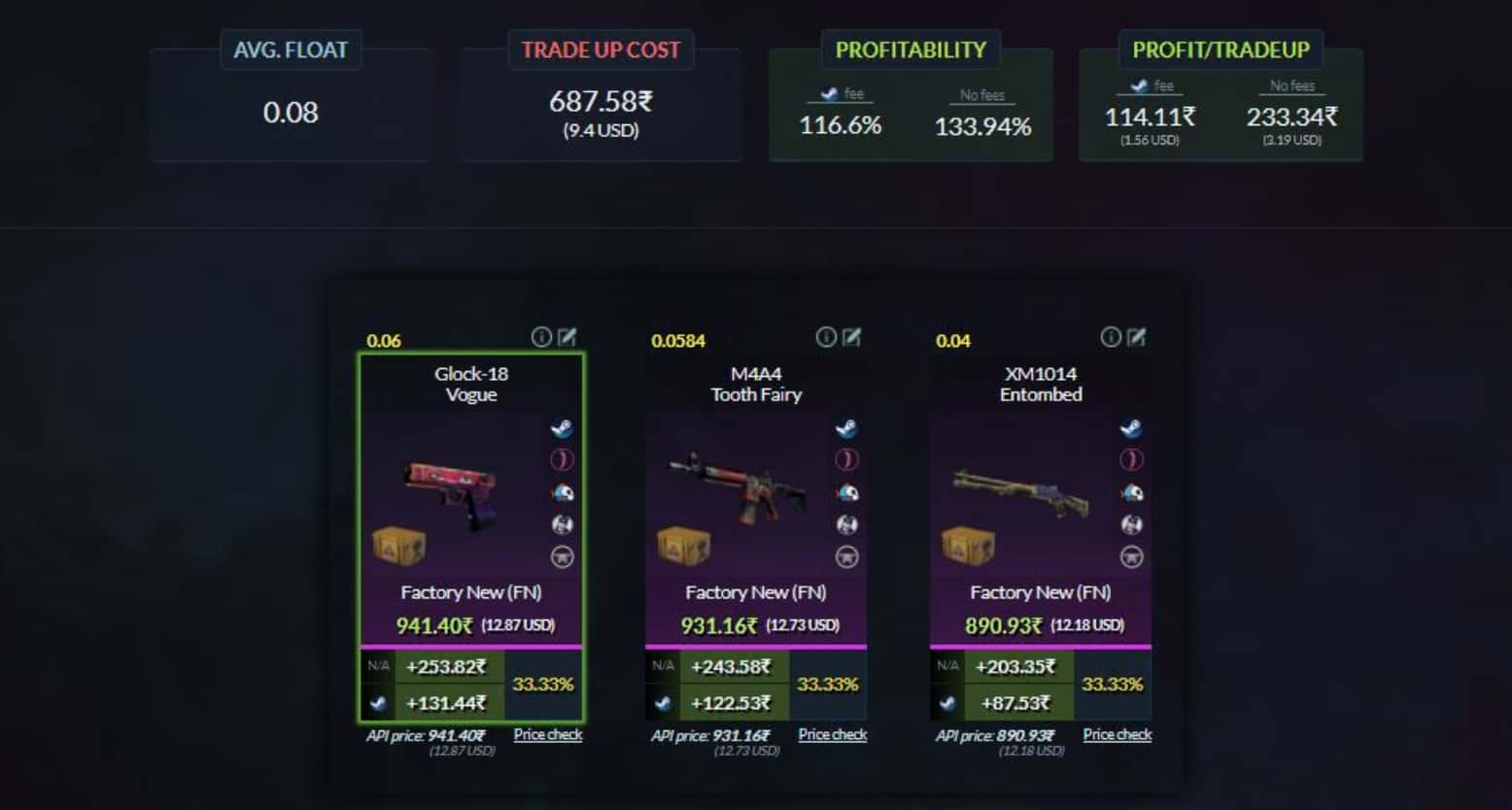Balbowa Insights
Your source for the latest news and informative articles.
CS2 Trade-Ups: Where Risk Meets Reward in the Digital Arena
Unlock the secrets of CS2 trade-ups! Discover how to turn risks into epic rewards in the digital arena—your winning strategy awaits!
Understanding the Mechanics of CS2 Trade-Ups: A Comprehensive Guide
Counter-Strike 2 (CS2) trade-ups can be a thrilling aspect of the game, allowing players to exchange lower-quality skins for a chance at a more valuable item. Understanding the mechanics behind CS2 trade-ups is crucial for players looking to optimize their chances of obtaining rare skins. The process involves selecting a combination of skins that meet specific requirements to successfully complete a trade-up contract. Typically, players need to choose ten skins of the same quality tier, and the resulting skin will be of a higher or equal quality tier. Familiarizing yourself with the tier system, probabilities, and market trends can significantly improve your approach to trade-ups.
Before diving into trade-ups, players should consider conducting thorough research to identify high-demand skins that might offer better returns. Utilizing tools and resources such as CS:GO roll calculators can help predict outcomes and assess the trade-up's profitability. Additionally, keeping an eye on market fluctuations can provide insight into which skins are on the rise and thus worth investing in. By strategically planning your trade-ups and staying informed, you can maximize your investment and potentially reap substantial rewards in the dynamic CS2 skin market.

Counter-Strike is a highly popular multiplayer first-person shooter game that has captivated players since its inception. One of the key aspects of mastering the game is understanding the optimal configurations for your setup, such as s1mple settings, which can greatly enhance your performance and gameplay experience.
Maximizing Your Gains: Strategies for Successful CS2 Trade-Ups
When it comes to maximizing your gains in CS2 trade-ups, understanding the mechanics of the trade-up contract is essential. The core strategy revolves around analyzing the item pool to identify valuable skins that can be obtained by trading less desirable items. Begin by evaluating current market trends and prices; tools like Steam Market or third-party websites can provide insights into which skins are currently in high demand. Research various weapon cases and their associated skins to pinpoint which items yield the best potential returns. Additionally, consider creating a trade-up calculator to help you simulate different outcomes based on the items you're willing to trade.
Another effective strategy is to focus on rarity and condition when selecting items for your trade-up contracts. Aim for a balance between high-rarity items and the overall cost of achieving your desired outcome. A good rule of thumb is to trade up from Factory New or Minimal Wear skins, as they tend to have better value in the marketplace. Also, staying informed about updates or events like Missions and new skins releases can open opportunities for profitable trades. By combining careful selection with timing and market awareness, you can create a robust CS2 trade-up strategy that enhances your overall gaming experience.
Is CS2 Trade-Up Worth the Risk? Analyzing Potential Rewards and Pitfalls
As gamers dive into the world of CS2 trade-ups, the question of whether the potential rewards outweigh the risks becomes paramount. On one hand, players have the chance to acquire rare and valuable skins, which can significantly enhance their gameplay experience and even lead to substantial financial gain. The allure of transforming a common skin into a coveted rare item is enticing, but it’s essential to approach this process with caution. With a multitude of factors influencing trade-up success rates, such as the skins' market value and the required float values, players must weigh these elements carefully before committing their resources.
However, the pitfalls of CS2 trade-ups are equally noteworthy. Players can experience significant losses if they invest in the wrong items or if market fluctuations devalue their trades. The uncertainty surrounding the trade-up process can lead to frustration and disappointment, especially for newcomers unfamiliar with the intricacies of the marketplace. Hence, it's crucial for aspiring traders to conduct thorough research, understand the risks involved, and consider starting with smaller, less risky trades to build their confidence and knowledge over time. Ultimately, while the potential rewards are attractive, the smarter approach is to prioritize strategic decision-making to mitigate risks.